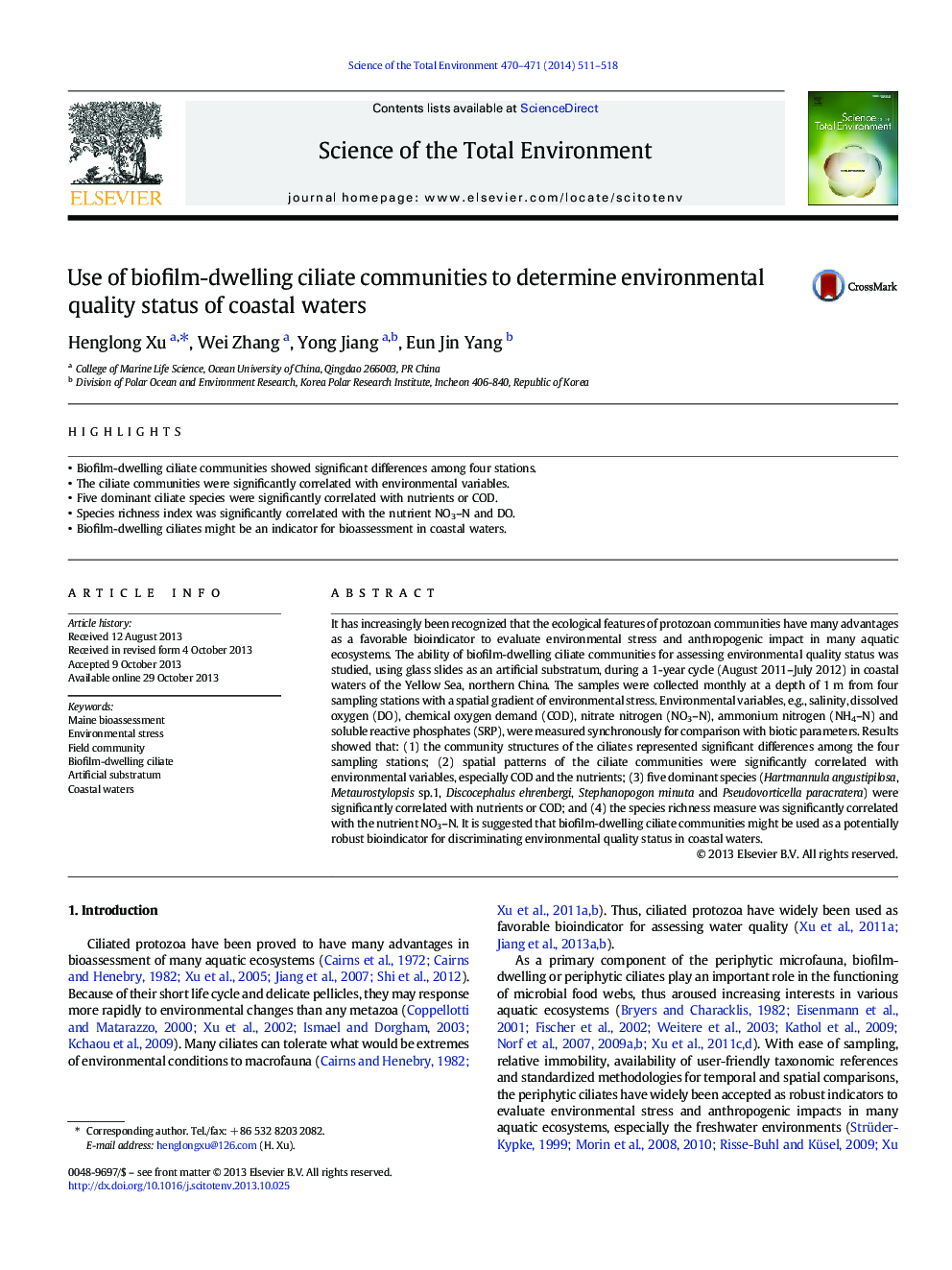| Article ID | Journal | Published Year | Pages | File Type |
|---|---|---|---|---|
| 6331408 | Science of The Total Environment | 2014 | 8 Pages |
Abstract
It has increasingly been recognized that the ecological features of protozoan communities have many advantages as a favorable bioindicator to evaluate environmental stress and anthropogenic impact in many aquatic ecosystems. The ability of biofilm-dwelling ciliate communities for assessing environmental quality status was studied, using glass slides as an artificial substratum, during a 1-year cycle (August 2011-July 2012) in coastal waters of the Yellow Sea, northern China. The samples were collected monthly at a depth of 1Â m from four sampling stations with a spatial gradient of environmental stress. Environmental variables, e.g., salinity, dissolved oxygen (DO), chemical oxygen demand (COD), nitrate nitrogen (NO3-N), ammonium nitrogen (NH4-N) and soluble reactive phosphates (SRP), were measured synchronously for comparison with biotic parameters. Results showed that: (1) the community structures of the ciliates represented significant differences among the four sampling stations; (2) spatial patterns of the ciliate communities were significantly correlated with environmental variables, especially COD and the nutrients; (3) five dominant species (Hartmannula angustipilosa, Metaurostylopsis sp.1, Discocephalus ehrenbergi, Stephanopogon minuta and Pseudovorticella paracratera) were significantly correlated with nutrients or COD; and (4) the species richness measure was significantly correlated with the nutrient NO3-N. It is suggested that biofilm-dwelling ciliate communities might be used as a potentially robust bioindicator for discriminating environmental quality status in coastal waters.
Related Topics
Life Sciences
Environmental Science
Environmental Chemistry
Authors
Henglong Xu, Wei Zhang, Yong Jiang, Eun Jin Yang,
